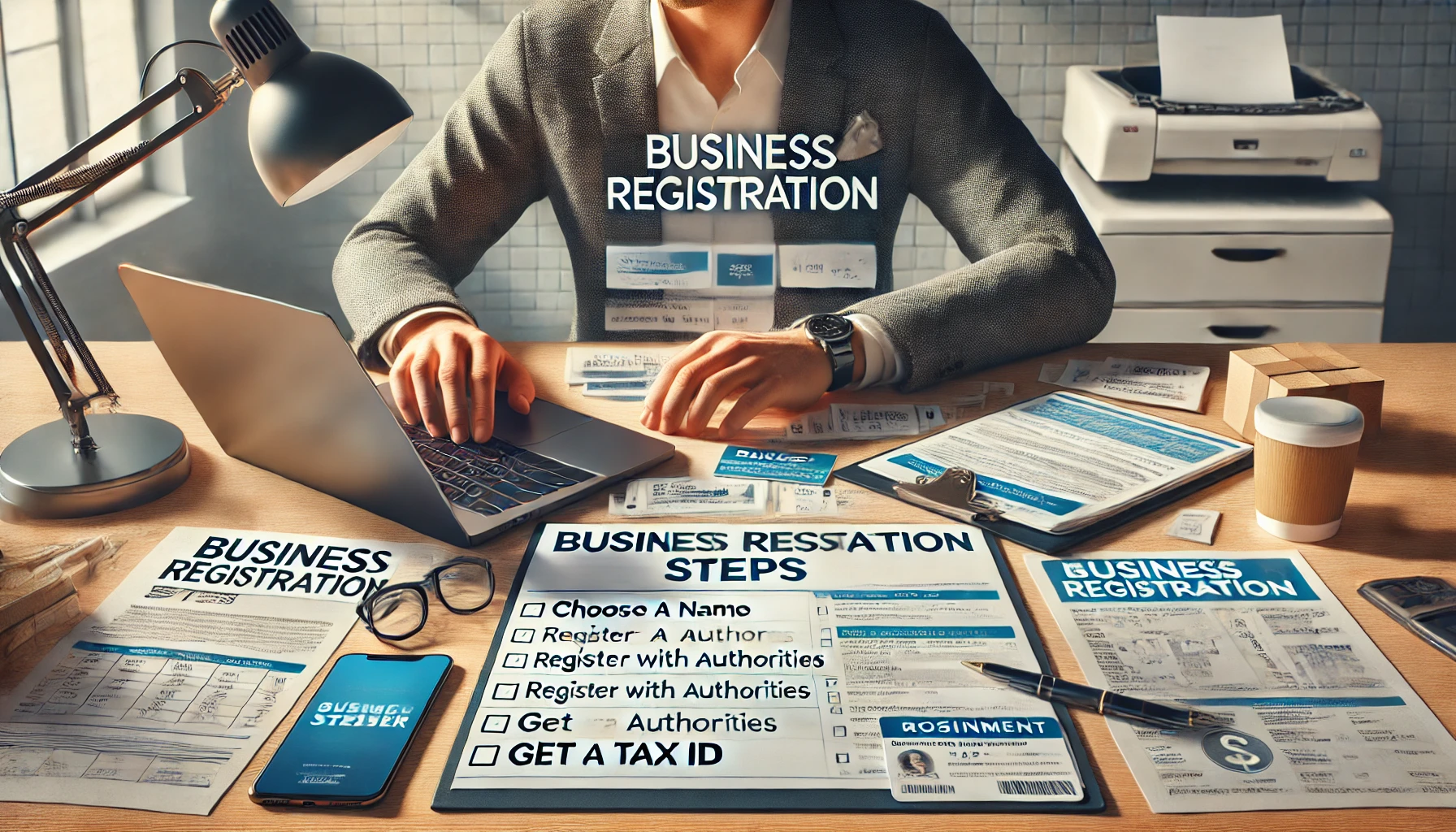Registering your business is one of the first official steps in becoming a real entrepreneur. It gives your company legal standing, builds credibility with clients and partners, and protects your brand. While it might sound intimidating, the process can be straightforward — especially when you break it down into simple steps.
In this article, we’ll walk through the process of registering a small business, whether you’re starting as a sole proprietor or planning something bigger.
Disclaimer: Procedures vary by country and region. This article focuses on the general steps common to many places. Always check local laws or consult a professional if needed.
Step 1: Choose a Business Structure
Your business structure determines your legal responsibilities, taxes, and liability. Here are the most common types:
- Sole Proprietorship: Easiest and cheapest to start. Great for freelancers or solo entrepreneurs. You and the business are legally the same.
- Limited Liability Company (LLC): Offers personal asset protection. Good for growing businesses.
- Partnership: Ideal if you’re starting with someone else. Be sure to create a partnership agreement.
- Corporation (Inc.): More complex, but allows raising funds through investors and has stronger legal separation.
Choosing the right structure is key. If unsure, consider starting as a sole proprietor and upgrading later.
Step 2: Choose a Business Name
Your business name is your brand — choose it carefully!
Checklist:
- Is it unique and easy to remember?
- Does it reflect your product or service?
- Is the domain name (website) available?
- Is it available on social media?
After choosing your name, check if it’s legally available in your region. Most governments offer online databases where you can search existing business names.
Step 3: Register Your Business Name
Once you’ve chosen a name and confirmed availability:
- Sole proprietors may need to file a DBA (“Doing Business As”) name
- LLCs and corporations register their official business name during the formation process
This step makes your name legally recognized, allowing you to operate under it, create branding, and build trust with customers.
Step 4: Apply for a Tax Identification Number
Most businesses need a Tax Identification Number (TIN) or equivalent. In the U.S., it’s called an EIN (Employer Identification Number). It’s free to apply for and is used for:
- Opening a business bank account
- Filing business taxes
- Hiring employees
Many other countries have their own versions of this number — like the CNPJ in Brazil or VAT ID in the EU.
If you’re unsure whether you need one, check with your local tax authority.
Step 5: Register with Local or State Authorities
Depending on your location and business type, you may need to register with:
- City or county government
- State agencies
- Chamber of commerce
- Business licensing offices
They might require additional documents, fees, or inspections — especially if you’re opening a physical store or offering regulated services.
Step 6: Get the Required Licenses and Permits
You may need special licenses or permits depending on:
- Your business type (e.g., food service, childcare, construction)
- Your location (some areas have zoning laws)
- Your services (e.g., transportation, financial advising)
Check online or contact your local government to find out which permits apply to you. Operating without proper licensing can lead to fines or shutdowns.
Step 7: Open a Business Bank Account
Once your business is officially registered, open a dedicated business bank account.
Benefits:
- Keeps personal and business finances separate
- Makes it easier to manage income and expenses
- Adds credibility when dealing with clients or suppliers
You may need:
- Your registration documents
- A tax ID number
- Personal identification
Consider also getting a business debit/credit card to simplify purchases and expense tracking.
Step 8: Protect Your Brand (Optional but Recommended)
If you’re serious about your brand, consider:
- Trademarking your business name or logo
- Registering your domain name for your website
- Securing social media handles
These steps help prevent others from using your brand identity — and show customers that you’re legit.
Step 9: Get Business Insurance (Optional but Wise)
Insurance can protect you from unexpected costs or legal issues. Common types include:
- General liability insurance
- Product liability insurance
- Professional liability insurance
- Commercial property insurance
Some licenses or clients may even require that you have coverage.
Step 10: Stay Compliant
After registration, your work isn’t done. You’ll likely need to:
- Renew licenses annually
- File tax reports on time
- Report income and expenses
- Maintain good financial records
Staying compliant keeps your business healthy and prevents legal problems later.
Final Thoughts: Officially Becoming a Business Owner
Registering your business is a big step — it makes your dream feel real. Even if the process takes a little effort, it brings long-term benefits like protection, credibility, and growth potential.
Don’t let the paperwork scare you. Break it down, follow the steps, and ask for help if needed. You’re not just starting a business — you’re building a future.
